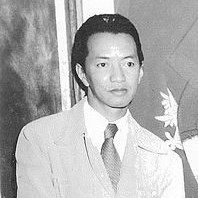Sagua La Grande (Cuba), 1902 – Paris (França), 1982
By Francisco Alambert
 Wifredo Lam, the youngest of nine siblings, had Afro-Cuban heritage from his mother’s side and Chinese roots from his father’s side. He was deeply influenced by African culture through his Catholic godmother, who was a prominent priestess in the Afro-Cuban religion Santería. Lam was a highly acclaimed artist during his lifetime, recognized by notable figures such as Picasso, Breton, and the Surrealists. In 1916, he moved to Havana, where he studied at the San Alejandro Academy from 1918 to 1922. The following year, he held his first solo exhibition in his hometown before traveling to Madrid to study further. In Spain, where he lived until 1938, he studied in the workshop of Fernández Alvarez Sotomayor, curator of the Prado Museum, and later at the Free Academy of Alhambra. Between 1924 and 1927, he lived in Cuenca, working as a portrait artist. He also worked in munitions factories in Madrid and Barcelona and fought against fascism, painting the work La Guerra Civil (1936) to depict the Spanish Civil War.
Wifredo Lam, the youngest of nine siblings, had Afro-Cuban heritage from his mother’s side and Chinese roots from his father’s side. He was deeply influenced by African culture through his Catholic godmother, who was a prominent priestess in the Afro-Cuban religion Santería. Lam was a highly acclaimed artist during his lifetime, recognized by notable figures such as Picasso, Breton, and the Surrealists. In 1916, he moved to Havana, where he studied at the San Alejandro Academy from 1918 to 1922. The following year, he held his first solo exhibition in his hometown before traveling to Madrid to study further. In Spain, where he lived until 1938, he studied in the workshop of Fernández Alvarez Sotomayor, curator of the Prado Museum, and later at the Free Academy of Alhambra. Between 1924 and 1927, he lived in Cuenca, working as a portrait artist. He also worked in munitions factories in Madrid and Barcelona and fought against fascism, painting the work La Guerra Civil (1936) to depict the Spanish Civil War.
After the defeat of the antifascists, Lam moved to Paris, where he befriended Picasso. He held an exhibition with Picasso at the Pearls Gallery in New York and also became close to André Breton and Benjamin Péret, joining the Surrealist movement. In 1940, he moved with the surrealists to Marseille and participated in the famous Tarot de Marseille. He also illustrated the book Fata Morgana by Breton. During this period, his work featured stylized figures, often referencing African masks.
In 1941, an exhibition of his works, alongside Roberto Matta, was held at the Institute of Modern Art in Chicago. During World War II, Lam left Europe with Breton, Lévi-Strauss, André Masson, and over three hundred intellectuals, heading to Cuba in 1942, with stops in Martinique (where he met poet Aimé Césaire, who became his collaborator) and Santo Domingo.
Lam engaged with intellectuals like Afro-Cuban folklorist Lydia Cabrera and writer Alejo Carpentier, renewing his interest in Afro-Cuban culture. Together, they helped shape a new artistic language that combined Santería, Surrealism, and Cubism. In 1943, the Pierre Matisse Gallery in New York showcased his painting A Selva, inspired by Cuba’s natural landscape. In 1945, Lam spent four months in Haiti, where, with Breton, he became fascinated by Vodou and mesmerism, producing the painting El presente eterno.
After the war, Lam split his time between Havana, New York, and Paris, settling in the latter in 1952. During this period, he created the Escolopendras series and murals in Havana and Caracas, and participated in various exhibitions, including the Surrealism International in Paris and Prague in 1947. In 1951, he won the top prize at the National Salon of Cuba in Havana. In 1957, Asger Jorn introduced him to ceramics in Albisola Mare, Italy, where he spent long periods. In 1959, he exhibited at the Documenta Gallery in Kassel, Germany. On a visit to Cuba in 1963, he painted El tercer mundo. That same year, some of his works were shown at the 7th São Paulo Biennial.
By the 1960s, Lam was already an internationally recognized figure. He received the Guggenheim International Prize in 1964-1965. Between 1966 and 1967, a major retrospective of his work traveled to cities like Amsterdam, Basel, Brussels, Stockholm, and Hanover. In 1967, he organized the Havana Salon of May and participated in the Cultural Congress in the same city. In 1972, he was given a special room at the 36th Venice Biennale.
In 1978, Lam became semi-paralyzed and began spending extended periods in Cuba for medical treatment. In 1983, one year after his death, the Wifredo Lam Center was established in Havana, which organized the first Havana Biennial, including an international conference on his work. In 1996, several of his pieces were given special attention at the 23rd São Paulo Biennale, which focused on anthropophagy. Since then, numerous exhibitions of his work have been held in Europe and increasingly throughout Latin America.


